‘Behemoth’ is a word which springs to mind or, perhaps more nautically, ‘leviathan’.
- Stepped hull and plumb bow
- Superb performance, sporty but safe handling
- Accessory packages to suit most users
- Surprisingly spacious accommodation
It is interesting that even a year or two ago it was still something of a novelty to see a boat with a plumb-bow, although newer designs coming from Europe tend to have this style. Even more eye-catching, for those who knew to look for them, are stepped hulls. It seems all ‘wrong’ to design a boat with chunks missing below the waterline, and yet there are increasing numbers of this type appearing as well.
Fast-forward to 2024 and the performance and handling benefits of these design features are indisputable. This style has now become almost the norm for new designs arriving from the naval powerhouses of Europe. And the Ryck 280 is another great example, albeit with enough subtle changes to differentiate it from the competition. Coming out of Germany, Ryck is a new division of well-known yachting brand Hanse. Realising that its range offering had a gap in the 24- to 39-foot powerboat segment, Hanse decided to create a new brand to help fill that gap.
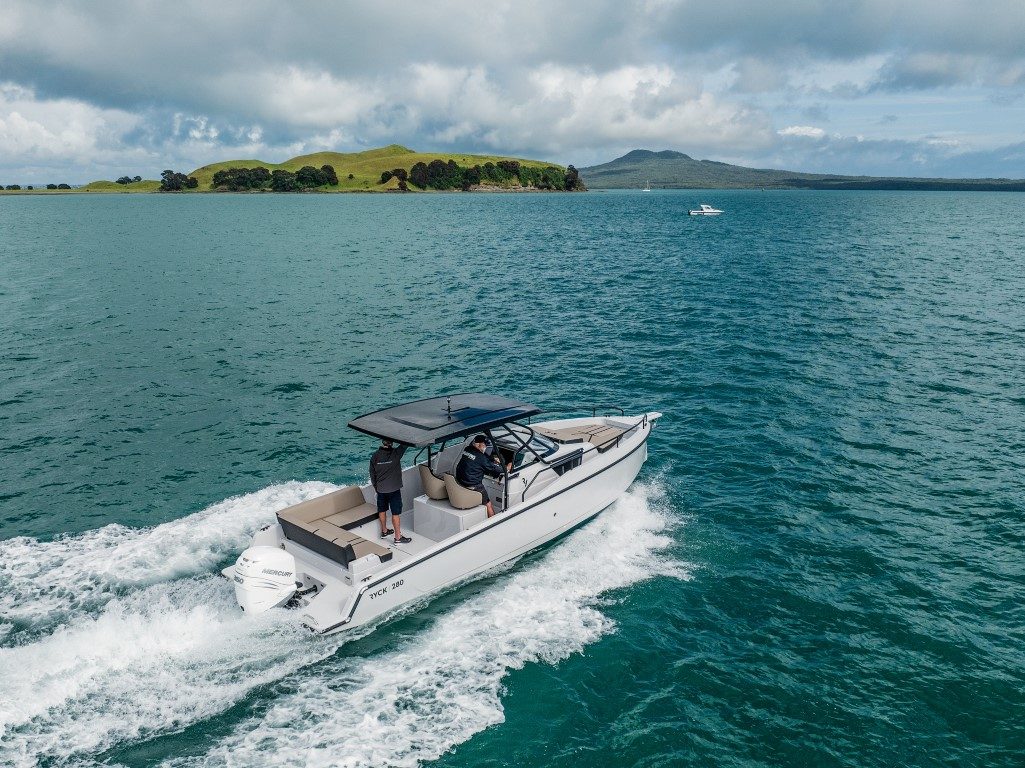
And the Ryck 280, designed by Bill Dixon, a Brit, is the first model to carry this new branding. Positioned as a day cruiser, Hanse has attempted to combine a comfortable cabin with a stylish sport design. All in a sophisticated but easily maintainable outboard-powered package. Although this is a production boat, Ryck has taken the approach of offering six different configurations to meet every need. These range from the Speed and Performance package through surfing, fishing, diving, cruising and weekender configurations. One of these options is sure to tick the boxes, no matter your boating preference.
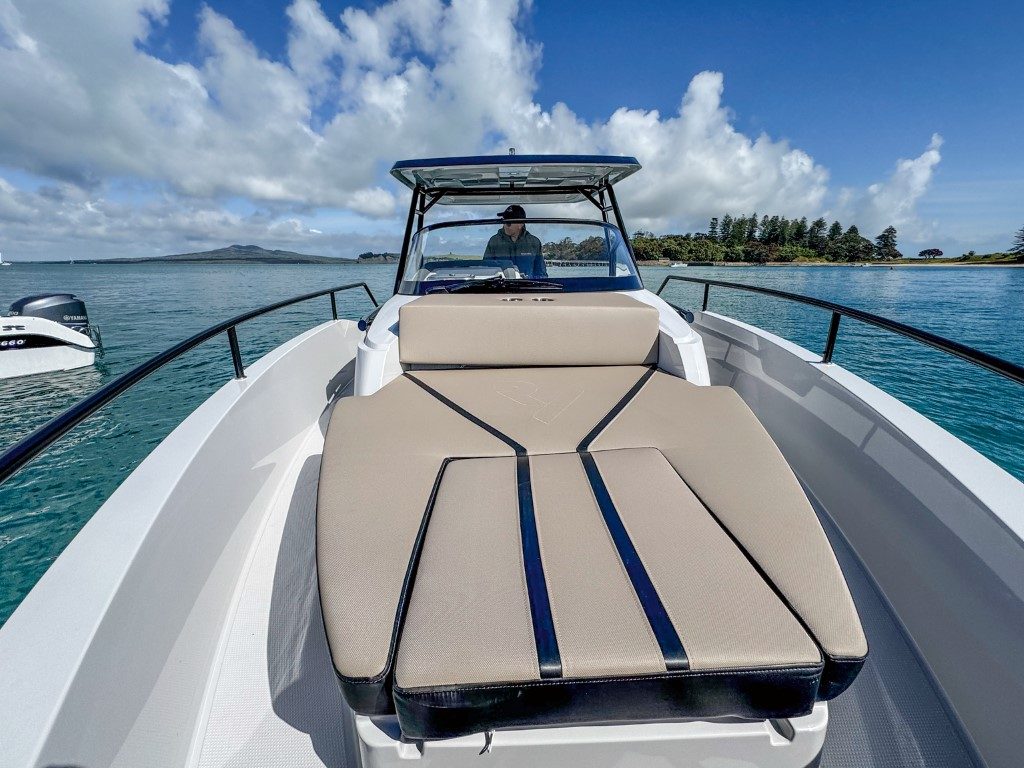
At first glance the boat appears to be a large centre-console, although hidden beneath the console and forward area is a sizeable overnight cabin. So really it is a walkaround, with a generous walkway meaning every corner of the boat is accessible. The boat is very ‘beamy’ – its 2.81m external beam still allows about 2.6m internally. A double lounger is positioned over the forward cabin, protected from the sun by a sturdy cover.
Windcraft Yachts, with branches in New Zealand and Australia, is the local agent. The boat provided to us for review is a light grey with black steelwork and a black hardtop, although different colour options are available when ordering a new vessel. Looking at the side of the boat, that bow is actually a reverse angle – at the waterline the bow is further forward than at deck level. This naturally produces a challenge for dropping the anchor, so a substantial fairlead is provided to ensures it stays well clear of the hull.

The interior of the boat is simple and clean, with no protrusions to snag occupants. There are numerous practical storage spaces spread around, each with a flush-fitting cover. The review boat had the standard textured gelcoat deck surface that was very comfortable and practical, although other decking options are available.
The stern lounge has a comfortable L-shaped couch, with a drawer-style Isotherm fridge hidden under it. A table drops into a deck mount, and when not in use is tucked into a handy hatch below decks. This boat is not configured with the fishing option, so there are no rod holders, bait boards or anything else to detract from its stunning finish. However, these are easily added, even if you don’t choose the full ‘Fish & Barbecue’ accessory package. The wide boarding platform, at the same level as the cockpit floor, is easily accessed through a transom walk-through on the starboard side of the couch. Note that several different layouts are available, including one with a full barbecue and wet bar built into the rear of the skipper’s seat pod. Windcraft Yachts also offers custom add-ons, including paddleboard racks, bait stations, ski arches and rod holders, which can be combined to create your ideal configuration.

At the helm are two fully-padded seats with bolsters, and these slide back and forth. The dash layout is clean and simple, with a Simrad EVO touch screen and a bank of buttons. The gleaming white Mercury 350hp Verado engine is controlled by Mercury’s superb digital throttle and shift (DTS) system, and a stylish sport steering wheel makes helming a pleasure.
Take a couple of steps go down into the forward cabin through a sliding door, and the interior is astonishingly spacious. On the starboard side is a separate toilet compartment, with a hand basin and storage cupboard. To port of the steps is a small galley cabinet. On the review boat this had nothing installed, but a microwave or cooker are options. And up front is a huge vee-berth, with infills to make a queen-sized bed.

Access to the bow area is via the side decks which form a deep walkway either side of the cabin. The whole boat features high gunwales, and even when you step up onto the bow area the rails are raised to provide continued security – this is a very safe boat to move around, even for children.
Right up front, the anchor set-up features an innovative below-deck winch arrangement that conceals the winch in a locker, keeps the moving parts well away from fingers or toes, and provides good rode handling in a confined space.
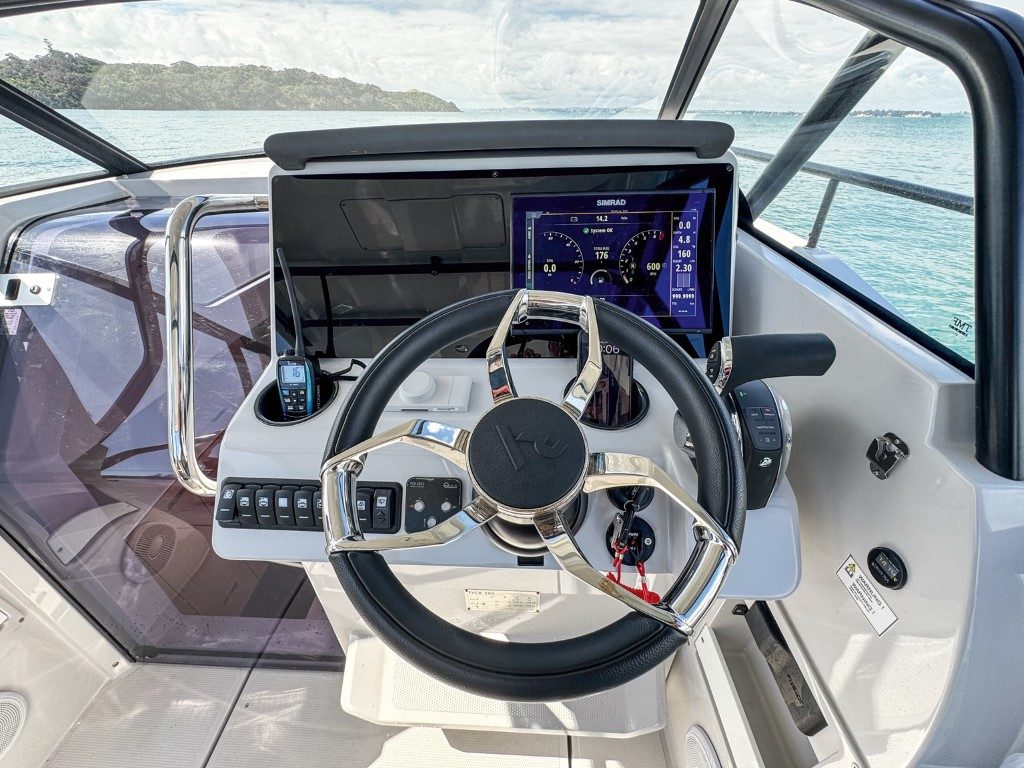
The top of the cabin forwards is moulded into a double-width sun lounger, with squabs for comfort. We kept the sun cover over this area for our test, and that also protects the upholstery from sun damage if the boat is stored outside. The upholstery can of course be ordered in a range of colours to suit your personal style.
We started the ultra-quiet Mercury 350hp outboard and motored away from the dock. A bow thruster is fitted for close manoeuvring, although it proved unnecessary in the favourable conditions on our review day. As we made our way down the slow channel into open water, we were able to evaluate how well the interior layout works. Fair to say there is a lot of usable space – first impressions had proved deceptive, as this is more like a centre-console on steroids. The boat is certified for up to eight occupants, and I could see there would be no issue with accommodating that number. We had just three people on board, so masses of space to move around.
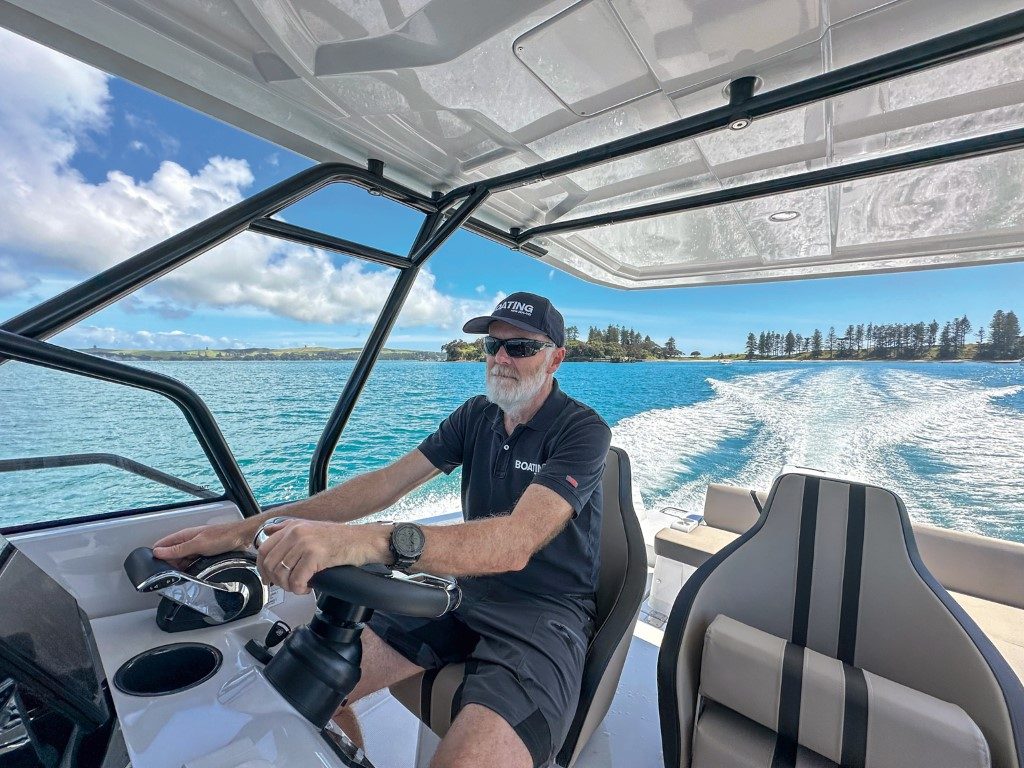
Once out of the channel we could open the throttle and explore the Ryck’s performance. The first characteristic, common to most stepped hulls, is that there was no dramatic lifting of the bow under hard acceleration. The whole boat stayed remarkably level, with those steps allowing air to be sucked under the planing surfaces to reduce the wetted surface. This makes the hull much less ‘sticky’, reducing the tendency of the nose to lift when the hammer is pushed hard down.
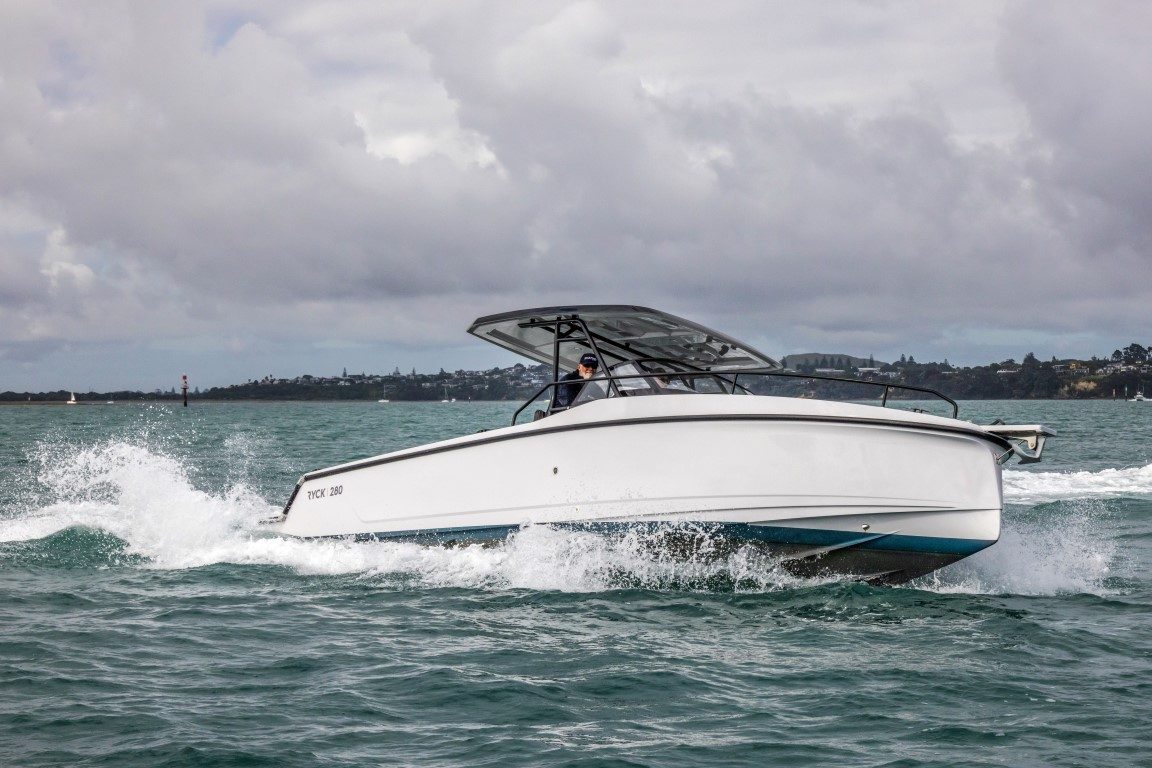
Of course, this design also makes the hull very efficient. We quickly reached our fast cruising speed of 31 knots, with the motor spinning at a very comfortable 4,600rpm. At this speed she was consuming 61 litres per hour, or a shade under two litres per nautical mile – pretty good for a boat of this size doing this speed. And interestingly, this proved to be the boat’s optimum speed with the best fuel consumption. At slower speeds the steps in the hull have less effect, while at higher speeds the motor is working harder and therefore starts to get thirstier.
Of course she goes faster, quite a bit faster, and we pushed her up to over 40 knots without issue, but at 30 knots a trip from Auckland to Great Barrier would take about an hour and twenty minutes using around 80 litres of fuel each way, so this is a very capable day-fishing boat.
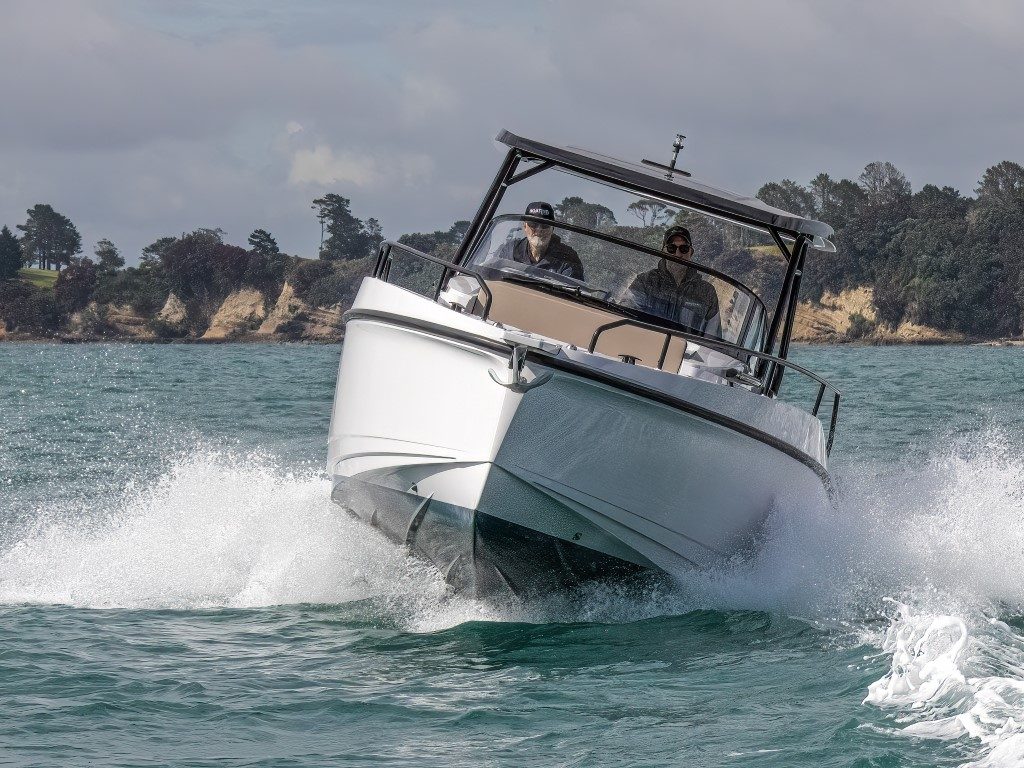
Another interesting characteristic of the ride is the effect of that plumb bow. Traditional deep-vee boats will hit a wave and cut through it from the top, inevitably lifting the bow up and riding over the top. The plumb bow will instead split the wave horizontally, dividing the water to each side with less ‘thump’ as it cuts through. There is still a deep vee below the waterline, so in most conditions the hull combines both actions to take care of the waves, big or small. Despite the boat lacking a raised, flared bow, no water found its way over the bow during our run.
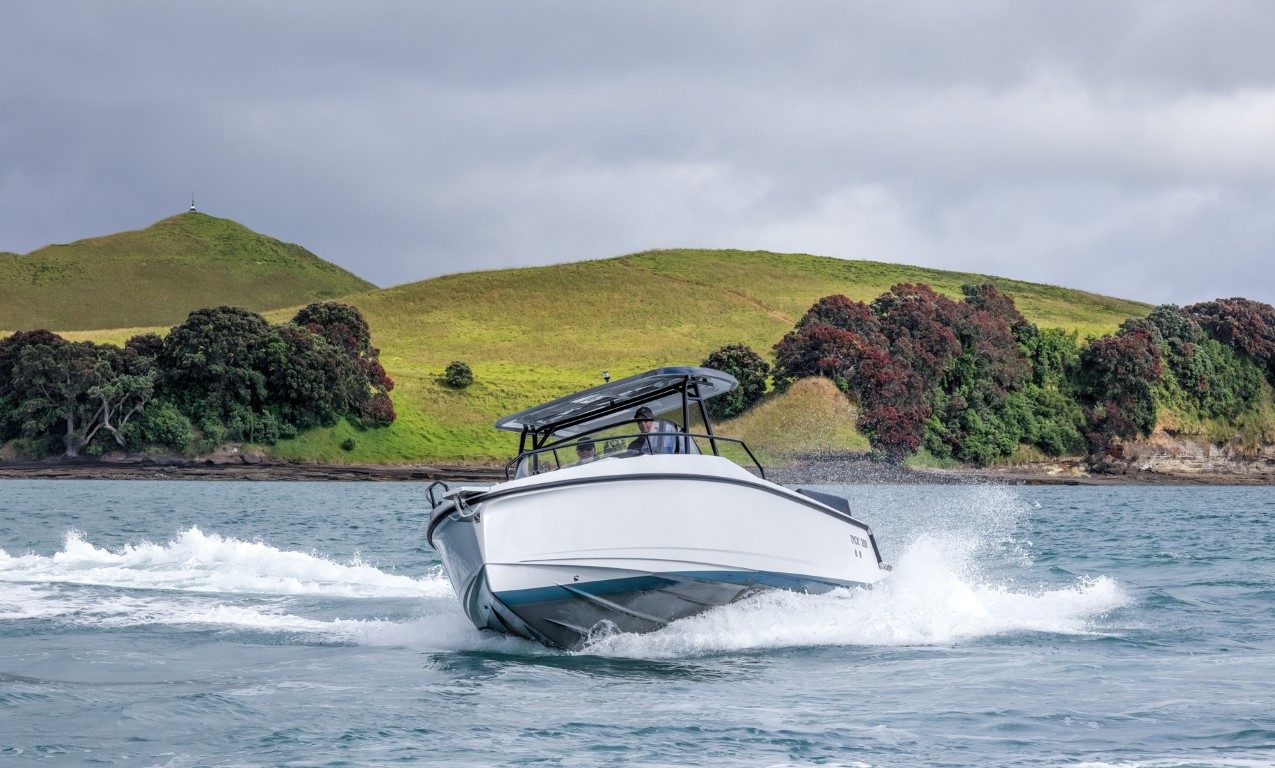
That big Mercury has power to spare, and this hull is rated for between 250 and 350hp. From our tests we could see that she would still perform well with a 250, although you would be sacrificing some of that top end, as well as some acceleration. The hull tracks straight and true, steering is light, and putting the hammer down midway through a turn causes no handling concerns. The boarding platform is high enough off the water that a following sea, or stopping suddenly and dropping into your own wake, doesn’t wet the deck.
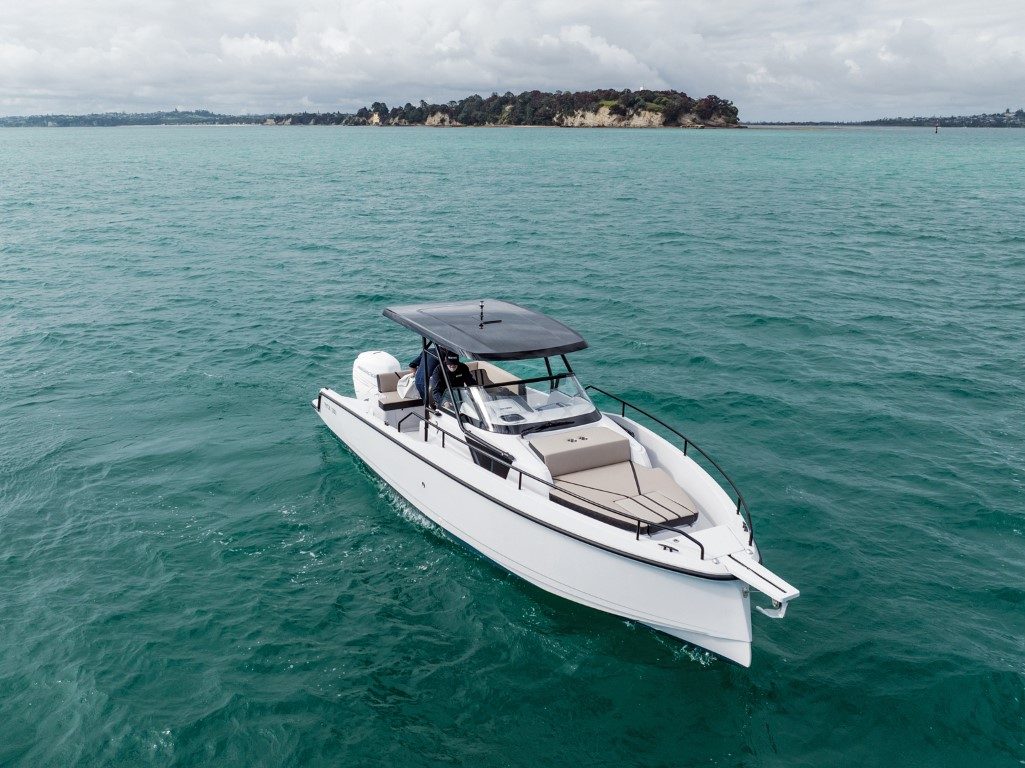
Overall, this is a fantastic boat with superb performance. It joins a growing club of plumb-bow boats with stepped hulls now available in our market – I predict we will see even more in future. Similarly, the 9.5m market is now dominated by outboard-powered vessels, where the extra fuel cost is easily outweighed by an outboard’s convenience and ease of maintenance. Personally, I would choose the wet bar cockpit option, as well as making provision for fishing, but layout is undoubtedly a personal choice. And Ryck has many options.
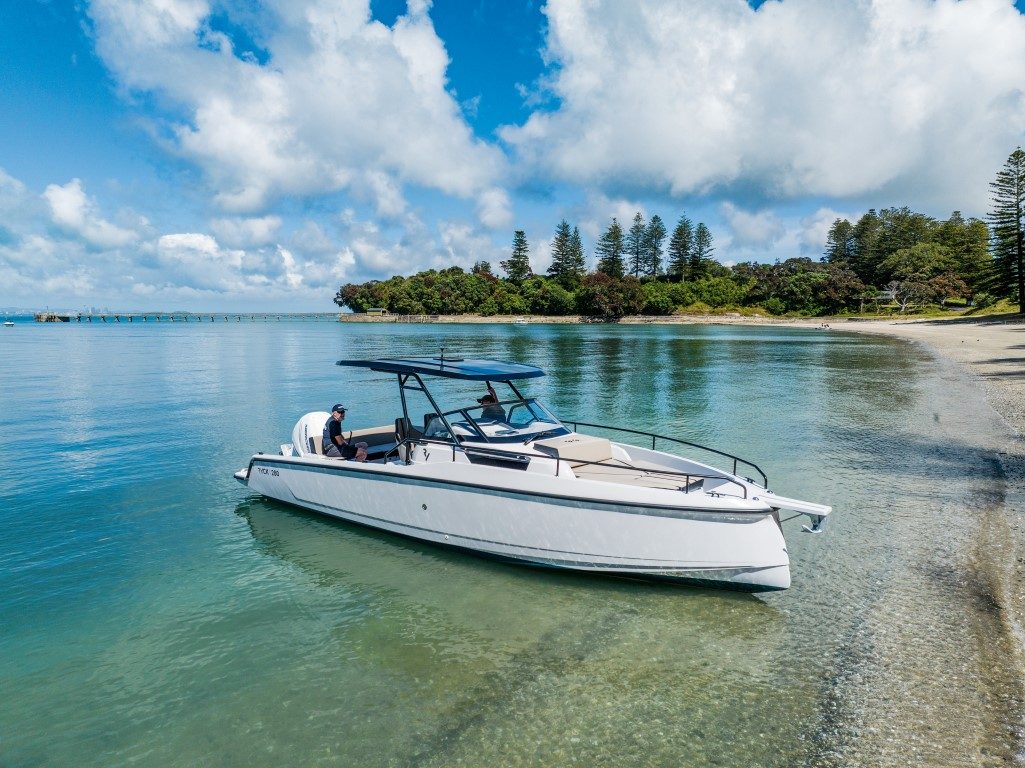
‘Behemoth’ is a word which springs to mind or, perhaps more nautically, ‘leviathan’.
White Pointer has earned the respect of discerning customers in New Zealand and Australia, attracting a loyal and ever growing following for its high-quality, rugged and totally dependable aluminium trailer boats.
The hardtop SP635 shares the same underpinnings as the popular SF 635 which was a completely new model back in 2020.
The pride and joy of a multi-generational family, Bliss resides on a pier that’s home to a couple of other Elite motor launches – Sandspit Marina is a hot-spot for the Bill Upfold-designed vessels, with several calling this small marina home.